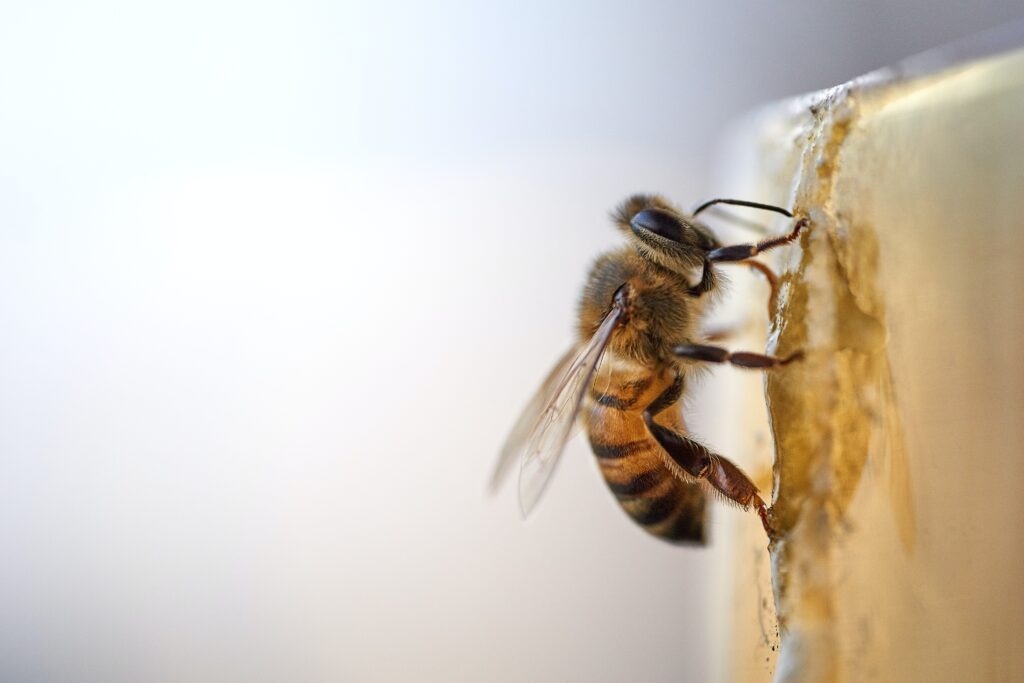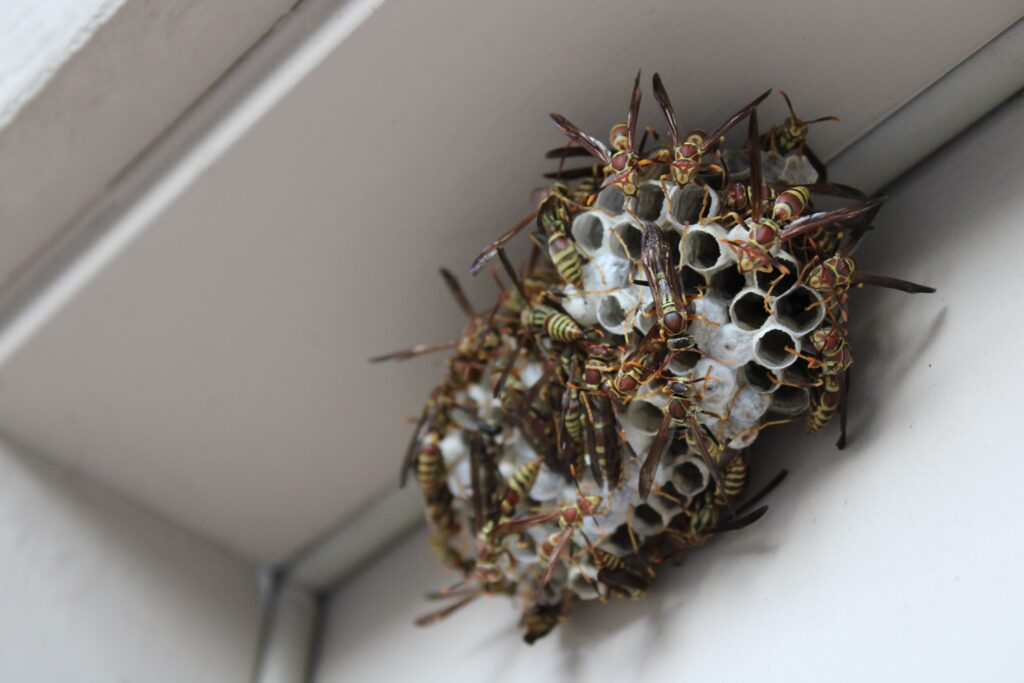Bees & Wasps
Bees and wasps are most active throughout the day in warmer weather and while they aren’t aggressive unless provoked or threatened, the sight of them can have us running in the opposite direction. Predominately their stings are just painful and can cause redness to the skin, there’s a small percentage of people that have an allergic reaction which can be life threatening. If you come across either a bee or a wasp, don’t disturb them, simply contact CTS and we will send out one of our expert technicians to investigate and carry out a treatment or arrange for their safe removal ensuring you and your family are not threatened.

Bees
Bees are an important part of our ecology, essential to the pollination process and more often than not can be relocated unharmed. Bees will tend to nest in hollow trees, some will choose burrows in the ground, there are species which will find space inside the cavity wall of your home. In Australia we have several different native species some of which are completely stingless, others are too small to deliver an effective sting. Bees solely feed on nectar and pollen and while we think of them as black and yellow striped like the honey bee, some of our native Australian bees are all black or metallic green like the Carpenter bee.
A swarm of bees can look frightening, but they are not preparing to attack, it is the method they use to start a new colony. If you come across a nest, don’t disturb or spray them, keep in mind they won’t bother you unless you bother them, close any doors or windows to prevent them from making their way indoors. Sometimes the queen will send out a handful of bees to scout for a new home first.

Wasps
Unlike bees which can only sting once, a wasp can attack multiple times and some species if they are feeling threatened will release a pheromone to quickly attract more wasps to help in the attack. There are several different species in Australia, 2 commonly found species in South East Queensland and the Sunshine Coast are the European Wasp and the Paper wasp.
The European wasp as its name suggests is not native to Australia. They nest predominantly in the ground, and you may see them actively flying in or out of a single entrance hole, they can also be found nesting in roof voids or any sheltered areas. European wasps are scavengers by nature and can live around humans due to readily available food, feeding off meat including pet food as well as sugary fruits or drinks. European wasps can be more aggressive than other species, similar in colour to the paper wasp however they have black antennae, they also fly with their legs raised, tucked in close to their bodies.
Paper wasps nests are shaped like inverted cones almost resembling honeycomb and are usually hanging under eaves or tree branches. They are not as aggressive as the European wasp, and feed predominantly off nectar however they will catch caterpillars or small insects to feed to their larvae. Same distinct yellow and black colour as other wasps, the paper wasps antennae are yellow orange and their back legs dangle down during flight, they are often seen around a water source and pollenating flowers making them an important part of our ecosystem.
Had my property pest controlled. Instantly had results show up out of all the small crevices. Very happy with the service on the phone and in person. This is the type of company where you feel confident in leaving your keys out for them to come do the job when you’re not home and know that it’s going to get done. Highly recommended for all pest control.
